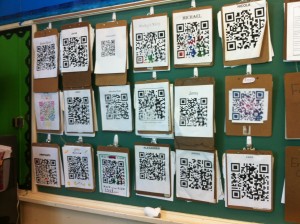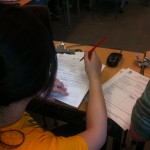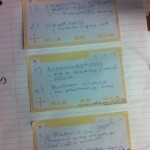Each student in my class has an I.E.P…..
 It varies how long the students have had a formal identification and it varies what type of identification, although all of them are identified as “Gifted”. During the first week of school, I began reviewing their files and updating their IEP’s, however, I struggled with this daunting task, since I barely knew the students.
It varies how long the students have had a formal identification and it varies what type of identification, although all of them are identified as “Gifted”. During the first week of school, I began reviewing their files and updating their IEP’s, however, I struggled with this daunting task, since I barely knew the students.
In fact, most of their IEP’s looked closely to the same – the same modification (s) , the same accommodation (s), the same test results, the same strength and weaknesses. I
How could this be that they were all the same? These documents, created on templates, with drop down menus were not telling of who these children are.
How I INVOLVE them (and make the entire process a bit more authentic)
1) Ask for Student Input when developing the IEP. Of course, this would depend on the age group and how you structure the questions and interviews.
Around the second week of school, I handed out the IEP’s to the students and had them go through and add, edit, and comment on each of the sections. Most of them had neither see or heard of the “IEP” before so it took a bit of time to explain the terms (accomodations, modification, strategies, methods).
2) Meet with the students individually and go through the IEP’s with them explaining how and why this document came to be. Help them understand their own identification and what they need to best succeed.
During the first month of school students did research on their own exceptionality. Many of the students wrote blogs about what it means to be “Gifted” or as they often see it, “Labelled”. One student (Nicola) writes,
“Those who are deemed gifted still need support; they need to feel like they are not the only ones with this label. Remember, never judge a book by its cover. Anyone can change the world, whether they passed a test or not. Everyone is equal, and that’s what’s most important to know. Like I said, to be gifted can mean a bunch of things. What does it mean to you?
3) Set aside time for students to continually develop and alter their own programs. Don’t let this be a “one off” lesson. Build this into a weekly plan. Build it around their Learning Skills.
We do this every week with tea. We try to discuss one area of need or learning skill. What does it mean to be responsible? How much independence should students have at what age? What is fair and equal when it comes to learning? How to advocate and ask for feedback.
 4) Provide a organized system for students to view and edit their IEP’s as needed. Of course, since some parts of this document may be highly confidential, the template would need to be altered.
4) Provide a organized system for students to view and edit their IEP’s as needed. Of course, since some parts of this document may be highly confidential, the template would need to be altered.
5) When updating the IEP’s each term, send home the “working copy” along with the formal copy to allow the parents and families to see how much student input is valued
 This IEP development strategy takes a lot of trust and relationship building to work. Students need to feel safe and free to express their honest feelings and advocate for themselves. One students said to me after reading his IEP, “Wow, I sound like an anti-social nerd that has no friends”.
This IEP development strategy takes a lot of trust and relationship building to work. Students need to feel safe and free to express their honest feelings and advocate for themselves. One students said to me after reading his IEP, “Wow, I sound like an anti-social nerd that has no friends”.
After implementing this student centered strategy with the students in a self-contained gifted classroom, I wonder if a similar strategy would work with NON identified students. Since we know that all students work better when they have input and when they are engaged in their own learning goals, then couldn’t we implement this in a regular classroom as well? I also wonder, at what ages this would work best? Students are very self-aware at the Middle School level which certainly makes sense to have them identify their own strengths and weaknesses. How could their other teachers be involved in this process? Will they have input as they travel into other grades? I wonder.
